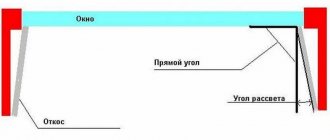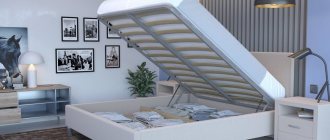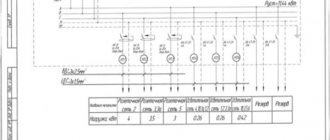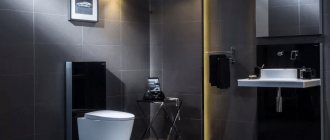When making redevelopment without the approval of supervisory authorities, the apartment owner must be prepared for a fine of up to 2.5 thousand rubles (Article 7.21 of the Code of Administrative Offenses of the Russian Federation), a legal requirement to return everything “as it was,” difficulties with selling real estate and transferring it as collateral.
There are examples in judicial practice when, after illegal redevelopment, owners lost their homes. The apartment was confiscated for improper use and mismanagement, and then sold at public auction. However, in some cases, it is possible to preserve the new appearance of the apartment by legalizing the redevelopment after it has been carried out. We’ll tell you in more detail how to do it yourself, and give step-by-step instructions and tips.
Types of redevelopment and their approval
All types of redevelopment can be divided into several categories. They will differ in the degree of complexity and the number of necessary approval documents. There are three such types:
- Redevelopment without prior approval. Documents (apartment plan “before” and after” and a completed application for redevelopment) are submitted to the MFC (multifunctional center) for review after completion of the work. Such work includes work that does not affect load-bearing walls:
- rearrangement of plumbing fixtures in the bathroom and toilet (without changing the boundaries), replacement with similar ones;
- installation of an air conditioner without gating load-bearing walls (installation of a satellite dish requires approval);
- dismantling built-in cabinets and storage rooms;
- moving the sink and electric stove in the kitchen.
An example of redevelopment without prior approval - Redevelopment according to the project. An apartment plan is ordered from BTI. They go with him to a design organization with access to an SRO and order a redevelopment project. The received project and application for redevelopment are submitted to the MFC, which is then transferred to the Housing Inspectorate for approval. After receiving permission, the work is carried out strictly according to the project; upon completion, a representative of the Housing Inspectorate is invited, he checks whether the load-bearing walls and general building systems have been affected, and issues a Redevelopment Acceptance Certificate. With this Act and project, you go to the BTI again and get a new registration certificate. This type of work includes dismantling, making openings in non-load-bearing walls, installing new partitions that do not create a load on the structure, and specifically:
- unification of the bathroom (demolition of the partition);
- expansion of the bathroom to the area previously occupied by a corridor or storage room (no one will issue a permit for a living area);
- dividing one room into two;
- combining two rooms (demolition of a curtain wall);
- changing the design of floors (including installation of heated floors).
An example of redevelopment according to the project - Redevelopment according to the project with agreement with the author of the house project. All interventions in the structure of load-bearing walls fall into this category. With this redevelopment option, it makes sense to order the project immediately from the organization that developed the serial design of the house, since their approval will still be required. Further, the registration procedure is similar: with documents to the MFC, after repairs with an Act from the Housing Inspectorate to the BTI for a new registration certificate. The most common types of redevelopment of this type:
- openings in load-bearing walls or ceilings (relocation or installation of new ones);
- kitchen and bathroom relocation;
- the arrangement of openings in inter-apartment partitions - load-bearing or not - does not matter (when combining apartments).
For the last type of redevelopment, documentation will be required: a work production log, drawing up Hidden Work Reports. Also, the work is carried out under the control of the organization that compiled the project. Upon completion of the work, the procedure is the same - obtaining the Certificate and making changes to the BTI.
Decorative designs
A solution for those who love something unusual. These could be plasterboard structures, glass shelves, a fireplace and even an aquarium.
How to differentiate into two zones using decor? You can use compositions from vases, tall indoor plants, whatnots, columns.
Redevelopment options for a 1-room apartment
In each case, the apartment owners have different requirements. Everyone has a different lifestyle, habits and ideas about comfort. So the options for reworking the same standard project can differ significantly. The most typical ones, which occur in the vast majority of cases, are the combination of a bathroom, sometimes with an increase in its area, the destruction of storage rooms and built-in cabinets. These are usually supplemented by individual requests that suit the needs of the hosts.
Select a bedroom (from a one-room to a two-room)
The most common request for remodeling a one-room apartment is to allocate a bedroom. In some cases this is possible, in others it is difficult. The apartment redevelopment option shown in the photo essentially converts a 1-room apartment into a two-room apartment. This happens due to the transfer of a large number of partitions.
Allocation of a bedroom in a one-room apartment
We begin to consider changes from the input. The bathroom doors were moved to another wall and the former pantry/closet was converted into a walk-in closet. The area of the hallway has been increased due to the area of the room; there is a partitioned off space for a spacious dressing room. Previously, the small hallway had 4 doors, which made its use extremely inconvenient. In the proposed redevelopment option, the functionality of the hallway is much higher.
The partition separating the kitchen was removed and a partition off the bedroom was installed. As a result, we got a kitchen-living room and a separate lounge room. To make the kitchen separation more obvious, a small partition was placed to delimit this area.
The alteration did not affect the exit to the balcony. It can be glazed and insulated, after which it can be attached to the room. (Read more about connecting balconies here ).
Another method is presented in the following project. The initial layout is not entirely successful: the long narrow kitchen is clearly inconvenient.
Selecting a bedroom in a one-room apartment using a radial partition and connecting a balcony
During the redevelopment process, it is necessary to remove the partitions separating the living room and the kitchen. The layout of the bathroom has been changed. The area was increased due to the kitchen, but there was still room for all the plumbing fixtures and a washing machine. In the hallway there is a small partition that screens off the built-in closet.
The living room area is separated from the kitchen-dining area by a small partition. The separation is supported by an extended dining area, which is an extension of the extensive work surface. A window block was installed at the exit to the balcony from the former kitchen. It lets in enough light to illuminate the kitchen.
The bedroom is separated from the living room by a gypsum plasterboard partition; the separation is completed by a translucent sliding radial partition. To prevent the bedroom from being too small, the loggia is insulated and glazed. The window block with the window sill was dismantled, and a closet was installed in the resulting corner. A workplace is organized against the opposite wall.
Two rooms + studio
And also the layout and its conversion into a three-room apartment. More precisely, there are two rooms left, but a studio is formed - a combined kitchen with a dining room. This idea is radical - the kitchen is moved to the place of the living room. The option can be agreed upon only if an electric stove is installed, as well as the availability of technical capabilities to relocate sewer and ventilation risers.
In this option, the bathroom is combined, the kitchen is moved into the room, and in place of the kitchen there is a children's room. The former living room is divided into a bedroom, a significant part of which goes towards the kitchen. The dressing room was also dismantled - it is also included in the kitchen area. The corridor became larger, which made it possible to make all the allocated rooms separate. An ambiguous option, but possible.
We turn it into a studio (3 options)
Among young people, the idea of transforming a standard apartment into a studio apartment, in which only the bathroom remains enclosed, is very popular. There may also be partitions that partially separate one area from another. They can be from ceiling to floor, but do not completely block the entire passage, leaving the space unified.
Redevelopment into a studio apartment
All that is needed in the first option is to demolish the partition between the kitchen and the room. The kitchen area will be visually decorated with different floor coverings - tiles in the kitchen, laminate in the dining-living room. Also, the divider will be a high table/bar counter, with a sofa standing with its back to it.
Options for redevelopment of studio apartments
The second proposed redevelopment method involves demolishing the partition between the kitchen and the room, as well as separating the hallway from the room. The hallway is only slightly marked by a small partition separating the kitchen area. Instead of the demolished walls, it is planned to install a new partition that goes at an angle. It partially encloses the bedroom area, forming a kitchen area.
And the last proposed project involves changing the shape of the bathroom. A partition is also installed to separate the hallway with a built-in wardrobe. In the common space of a studio apartment, the kitchen area is separated by a bar counter, all the rest are formed only by interior solutions.
Allocation of children's
With this layout there is not much choice. Just divide the room with a transparent partition that allows light to pass through.
Allocation of a children's room in a one-room apartment
At the request of the owners, the combined bathroom is divided into a toilet and a bathtub. This was made possible by destroying the closet. The closet leading into the room was also removed and the entrance to it was moved. Now he is from the corridor, and not from the kitchen, as before. Part of the room from the window is separated by a plasterboard partition with a sliding door. In the children's room there was room for a built-in wardrobe. The walk-through room is both the living room and the parents' bedroom.
Sliding doors
The mechanism repeats the wardrobes. Suitable for wide openings and will be a suitable solution for zoning studios. But it will look bulky in small rooms.
In order to preserve daylight, install doors made of glass or transparent plastic.
Remodeling 2-room apartments
With two-room apartments there are usually more options: after all, there is more space, which means they provide more room for imagination.
Make a two-ruble into a three-ruble
Having a two-room apartment, you often want to turn it into a three-room apartment. In the option proposed below, a distant long and narrow room with a built-in wardrobe is divided into two. Moreover, the partition was made nonlinear, which made it possible to organize two closets for storing clothes.
Convert a 2-room apartment into a 3-room apartment
The alterations also affected the bathroom area. It is enlarged due to the corridor. The area became almost twice as large, which made it possible to install a washing machine. Since the entrance to the kitchen from the corridor was blocked, it was made from the living room.
A different type of initial layout and a different approach. Strictly speaking, there are two rooms left, but two zones have appeared - the living room and the dining room. As a result, the rooms turned out to be separate and both can be used as bedrooms - one for adults, the other for children. At the same time, the family will have a spacious room where everyone can gather.
Turn a two-room apartment into a three-room one
The advantage of this plan for remodeling a two-room apartment is that it is possible to make wall cabinets in both rooms.
Another layout option with widely spaced rooms. The task is the same: to have three dedicated rooms. If you don't bother with a global relocation of the kitchen and bathroom, then there are two possible options.
Not the most comfortable apartment to remodel
In the first case, the partition separating the corridor is removed and the resulting space is divided by partitions (blue) or translucent partitions (green). In the back room there is a closet. The second method is more obvious - they divide a large room into two small ones, dividing the exit to the balcony.
Changing the size of the bathroom and hallway
In many cases, redevelopment concerns the bathroom and hallway. Sometimes the size of the hallway is increased by reducing the bathroom, and vice versa. Such options are presented in the photo below.
Redevelopment option for a 2-room apartment with a change in the area of the bathroom or hallway
There is another good idea in these plans: two separate closets are converted into one - with an entrance from the hallway.
Changing room sizes
A few more options for a different type of initial layout. All that can be done here with the bathroom is to combine it and thereby use the space more efficiently. The main idea of this redevelopment is to remove the “appendix” sticking out in the room for some unknown reason.
Kopeck piece in a house series I-209A
As you can see, there are two main options - to make the hallway larger and the room rectangular, or to increase the area of the room, leaving the hallway wall in the same place, but removing the built-in closet and moving the partition of another room. In the second option, it will be possible to arrange a decent-sized dressing room or make two built-in wardrobes - one with an entrance from the hallway, the other from the room.
Stationary partitions
You can divide the room with a wall. But building a wall is time-consuming, expensive, and sometimes problematic. The partition will help define the wall, but not build it. Plus, unlike a wall, the partition can be easily dismantled.
But this option is only suitable for rooms with two windows, since it is impossible to divide the window with a partition.
You can make a partition from:
- brickwork;
- drywall;
- foam blocks;
- wood;
- glass
Solid partitions are not suitable for small rooms. In this case, you can make a partition up to 1.2 meters high or use openwork, glass, carved options.
Redevelopment of three-room apartments
As in other 3-room apartments, the main idea is to enlarge or combine the bathroom, a more rational use of the available space. Specific solutions depend on the wishes of the owners.
Optimization of space use (due to the corridor)
In the version presented below, the partition separating the living room from the corridor has been dismantled. The result is a spacious room, giving scope for the implementation of various kinds of design ideas. The bathroom and toilet are combined, one door is blocked. This made it possible to slightly increase the area of the second room.
Increasing living space due to the corridor
Another project also reduces the size of the corridor. This area is part of the living room, but it becomes a walk-through area, which is not critical for this room. The alterations also affected the bathroom - the partition between the toilet and the bathroom was removed, and the area was also expanded a little by moving the wall into the corridor. Due to the same corridor, the kitchen area has been increased - the door block has been placed almost close to the entrance to the bathroom.
Optimizing space use
And the last alteration is the dismantling of the non-load-bearing window sill and the installation of sliding glass doors in the floor instead of the former window block.
Organization of a second bathroom
In four-room apartments, the areas are already large, and quite a lot of people can already live. Therefore, in such cases they often want to make a second bathroom. The main difficulty is whether there are technical capabilities to supply water supply and sewerage. Also, they will not be allowed to install a bathroom above residential premises - only above technical ones. In these redevelopment projects, the second bathroom is planned in place of the closet, which is possible.
Changing the corridor area
All major changes relate to the use of the hall area, as well as the size of the second bathroom. The purpose of the rooms (all except the kitchen) may also change.
Separation of adjacent rooms
Not everyone likes to have walk-through rooms. The owners of such apartments agree to lose part of the living space, but share the premises. In this case, part of the area of room 2 is fenced off, due to which the rooms are separated. The remaining “appendix” can be used to build a closet. In this case, the room becomes more regular in shape (closer to a square), which is more convenient for design development.
Separation of adjacent rooms
The second group of alterations concerns the bathroom. Almost all partitions are demolished and the door block to the kitchen is removed. The bathroom area becomes larger due to the corridor.
The entrance to the kitchen is from the living room (room 3). This wall is load-bearing, so the opening requires additional reinforcement with metal structures, as well as project development (as does the removal of the bathroom into the corridor).
Mobile partitions
These are partitions that are not attached to the walls, floor or ceiling. They are easy to move, come in different shapes, sizes and colors, and don't take up much space.
What are the benefits of mirrors in adjacent rooms: renovation secrets
Everyone knows this simple way to help enlarge a room: using mirrors in the interior.
To prevent the reflection from being distorted, when renovating an apartment with adjacent rooms, mirrors should be positioned strictly vertically. If this condition is not met, the image in the mirror will have various linear deformations, which is of no use to you.
It is also undesirable for the sun's light to hit the surface of the mirror; it may become stained, darken or become dull.
A great way to increase space when renovating an apartment with adjacent rooms is to install a mirror in front of the window. It is desirable that street light is reflected in it. By placing a mirror behind the lighting element, you can make the room deeper and also brighter.
Placing a mirror opposite a decorative piece or chandelier is another interesting method of expanding a room. Not only does the room become larger, but the interior also becomes original.
The most effective option is to install a wall of mirrors in your apartment. Such a technique completely transforms the room, it will become completely unrecognizable. Every piece of furniture, all surfaces (walls, floor and ceiling) will be reflected in the mirrors. The room immediately becomes wide and high, acquiring additional depth. It looks simply amazing...
What else needs to be taken into account during renovations in an apartment with adjacent rooms
What else can you do to make a cramped room feel like an impressive space? Special optical effects will help. It is not difficult to deceive perception a little using some methods. For example, you can install mirrors in a special way, choose the appropriate color and wallpaper pattern. An interesting option will turn out if you use photo wallpaper in an apartment with adjacent rooms during renovation.
When renovating an apartment with adjacent rooms, do not forget about proper planning. Furniture, decor and other interior elements should be in harmony. Voluminous and beautiful light-colored fabrics will help create the illusion of a large room and add comfort. An impressively decorated room seems larger.
Typically, designers use special methods when they want to visually expand the space. There are some tricks that you can use when renovating an apartment with adjacent rooms:
- You can visually divide the space into zones by selecting different materials for decoration.
- If the floor and walls are light-colored, the room appears wider and higher. Conversely, dark colors make the room smaller.
- Choose minimalism when decorating your space. The fewer objects in a room, the more impressive it seems.
- In the design of a small room, it is advisable to abandon bulky interior items.
- Areas with contrasting finishes compress the space.
Zoning a rectangular room into a bedroom and living room
In a rectangular room, there is a high risk of blocking the window and darkening the room, so solid partitions and cabinets are abolished:
- The bedroom area can be highlighted using a podium.
- Place the bed in a niche and surround it with translucent tulle or a canopy.
- Install a translucent shelving or low partition.
You need to know the advantages and disadvantages of the room and use them skillfully. Columns, niches, arches, furniture are excellent zoning tools that will help create a cohesive composition!
Common Mistakes
These include:
- demolition of load-bearing walls, making openings in them;
- laying heated floors on the loggia, even if it has become part of the room;
- increasing the area of the kitchen, hallway, bath or toilet at the expense of living rooms;
- installing windows in the kitchen;
- swapping a kitchen or bathroom with each other or with a living room;
- making changes to the design of engineering structures - gas, sewer, water pipes, ventilation systems, etc.
It is unacceptable to locate sinks, bathtubs, and toilets where neighbors below have living quarters, except on the first floor (subject to permission).
In a word, any actions that could lead to deterioration of living conditions and damage to other people's property in the event of a possible accident are unacceptable.
Legislatively compliant work on a load-bearing wall
In fact, these are any works that are associated with it, incl. gating, dismantling and making openings, because they can lead to weakening of the building frame and eventual collapse.
Is it possible to redevelop a three-room apartment in a five-story brick building? How is redevelopment approved in court? Read on.
Find out the specifics of coordinating the redevelopment of small apartments here.
Permission for this, after careful calculations, can only be given by the building’s designers.
What is this
Redevelopment of an apartment is a change in the configuration of internal areas, the geometric shape of rooms, turning adjacent rooms into separate ones, eliminating or, on the contrary, installing a built-in wardrobe or dressing room/storage room.
In a word, this is a large-scale renovation aimed at turning, for example, a not very comfortable typical two-room Khrushchev apartment into more modern, fashionable, and most importantly, comfortable housing.
Basically, most of the projects come down to increasing living space, living space, which can be achieved, for example, through an arched combination of the living room and kitchen.
This significantly increases the visual perception of a small apartment, or improves convenience.
For example, redevelopment of adjacent rooms into separate, isolated ones.
Not all types of apartments are suitable for making radical changes to the plan.
In addition, not all the wishes of the owners are legally and technically possible to implement in practice.
Nevertheless, for many people this is the only opportunity to improve their living conditions, turn a small apartment into a suitable place of residence for a family with children, etc.
Let's figure out what types of redevelopment there are, what can and cannot be changed in a home.
Arches
Suitable for spacious rooms, but it is better not to use them in small rooms. They will create a feeling of cramping. Arches will be a good replacement for doors. They are made in different styles, so they fit any design. The arch can be purchased at construction stores, made to order, or made independently.
For its production use:
- drywall;
- glass (you will get an arch with stained glass);
- plastic;
- grates.
The influence of color in adjacent rooms
According to designers, correctly selected interior shades give the room airiness and volume, the room seems more spacious. The color of the walls should match the overall decoration. The palette should be uniform; tacky shades should not be allowed when renovating an apartment with adjacent rooms. The ceiling, walls and floor should be in harmony with each other. The same applies to all interior elements. Furniture and curtains are no exception.
Different colors affect people in different ways. Each shade has its own properties. Yellow, peach and beige tones create a warm and cozy atmosphere. Living rooms are often decorated in this way; residents spend the most time in this room. Bright positive energy drives away depression and promotes relaxation.
When choosing the appropriate shade of materials for renovating an apartment with adjacent rooms, remember: an interior in dark colors visually narrows the space; such colors are absolutely not suitable for a cramped room; it will become even more unsightly.
It is better to decorate the children's room and bedroom in blue, pink or light green shades; they are relaxing and soothing. And, of course, you shouldn’t ignore the white color; this renovation of an apartment with adjacent rooms is pleasing to the eye.
All shades are divided into cold and warm. The latter improve your mood and add energy. These are, for example, orange, red or yellow. Keep in mind that these colors are not suitable for cramped rooms. Cool colors: white, blue, light green and green visually enlarge the room. But you should avoid overly saturated and bright shades.
Please note that for the renovation of adjacent rooms with an area of less than 8 square meters. meters too light colors are also not suitable. The room becomes like a public toilet or a hospital ward. In a spacious room, this decoration looks harmonious. You can achieve a visual enlargement of a small room by using photo wallpaper or frescoes; light-colored mosaic with a cool tint. Blue or blue color visually expands the room. It seems that objects are at a great distance. Warm orange has the opposite effect, narrowing the room and focusing on details.
If the windows of the room face north, it is recommended to select a wallpaper pattern in warm colors; the image will appear larger and softer. Yellow, gold and orange shades will create a cozy atmosphere and add warmth. Beige and peach colors will successfully complement the interior of adjacent rooms during renovation.
Hesitant to use the recommended effects of different shades? You can choose a contrasting wall finish by placing a fresco of the same color on the surface. But the drawing itself should be about a tone lighter.
Curtains
Since fabrics absorb odors, curtains are not suitable for zoning the kitchen, but they will look good in the bedroom or living room.
To make such a partition, you will need:
- cornice;
- fabric for curtains;
- accessories.
Blackout curtains aren't for everyone, but you can use beads, blinds or muslin.
Screens
For those who want to divide a room without using bulky structures. The screen can always be folded, removed or moved. It's comfortable. The right screen will fit into the design of any room. A mirror screen will make the room visually larger and expand the space.
What furniture is better to put in adjacent rooms after renovation?
It is recommended to carefully consider the layout of the room. How are the furniture pieces arranged? Surely something could be done differently. Maybe it’s worth removing something altogether or replacing it using new products that perform several functions at once? For example, in the bedroom you can do without a chest of drawers. Bed drawers can be used to store things. Place excess items in a closet or put them on a shelf.
When starting a renovation in an apartment with adjacent rooms, pay attention to the wardrobe. Today it is a fashionable piece of furniture, very comfortable and roomy. Looks stylish. A folding table is also a suitable piece of furniture. At the right time, such furniture unfolds, but in its normal state it takes up little space. There are many similar options, you can choose the one that suits you best.
Even when renovating an apartment with adjacent rooms, this technique helps to increase the space: arranging furniture along the walls of the room. Eye-catching decorative trinkets can be placed in the corners.
The high-tech direction is ideal in this case. This style is characterized by a minimum of furniture. Light interior decoration with a metal or glass sheen will enhance the effect, turning a small home into a spacious one.
Consider the size of each item in the room when renovating an apartment with adjacent rooms. It is better when all the furniture is approximately the same height. Otherwise, unnecessary accents will be created, disrupting the overall picture, and the room will seem cramped.
When choosing cabinets, pay attention to the doors. The preferred option is using mirrors. As mentioned earlier, this will help expand the space. The most suitable option is built-in interior items. But this will cost the owners more.
Choose elegant furniture. When renovating an apartment with adjacent rooms, you should look at lightweight models of tables, chairs or coffee tables (plastic or glass).
To make a small room seem larger, it is correct to place tall elements behind, and place small objects closer.
An important point: if space is limited, only the essentials should be left in adjacent rooms during renovation. All furniture should match in color, there is no need to create unnecessary contrasts. A harmoniously decorated room looks large and wide.
How to zone a room using suspended ceilings
Two rooms can be made from one using the method of photo printing stretch ceilings - this is one of the most expressive methods of zoning. If you place the drawing over the desired functional area, you can get the desired effect and emphasize its purpose. At the same time, designers recommend choosing colors of the image and the main ceiling fabric that would be combined and echo each other. With the help of photo printing, single- or multi-level structures are carried out. Well-chosen lighting will help to emphasize this zoning option.











